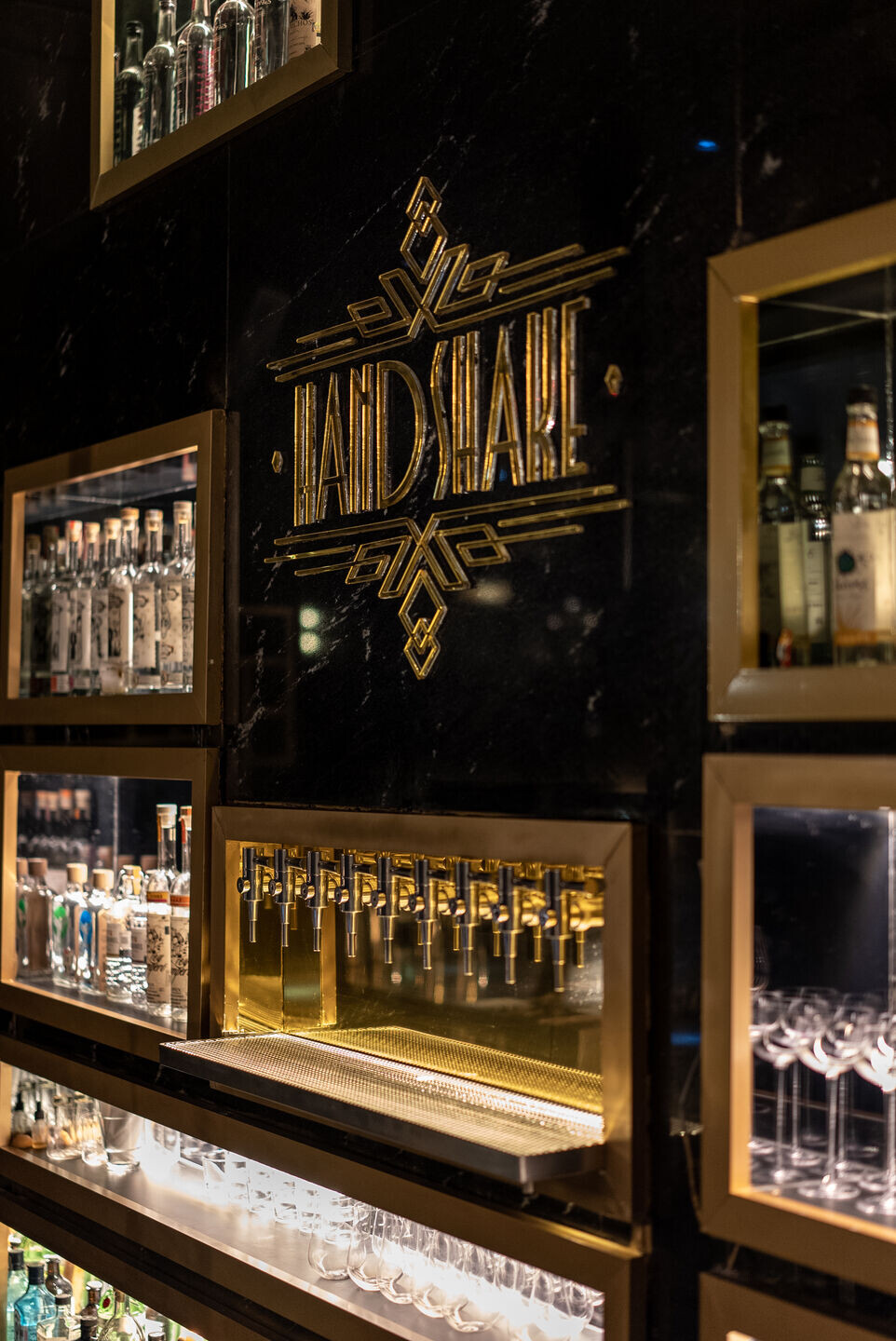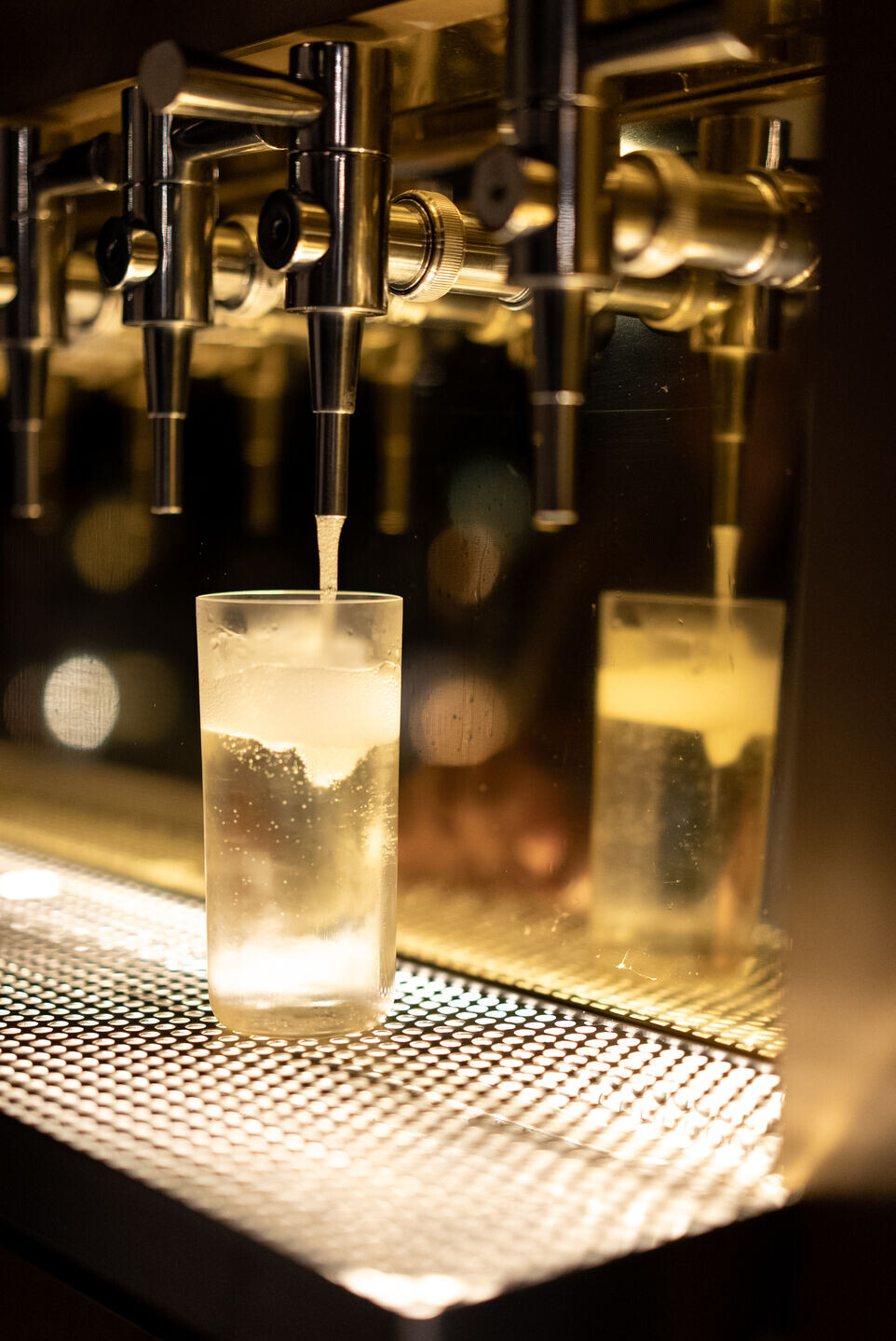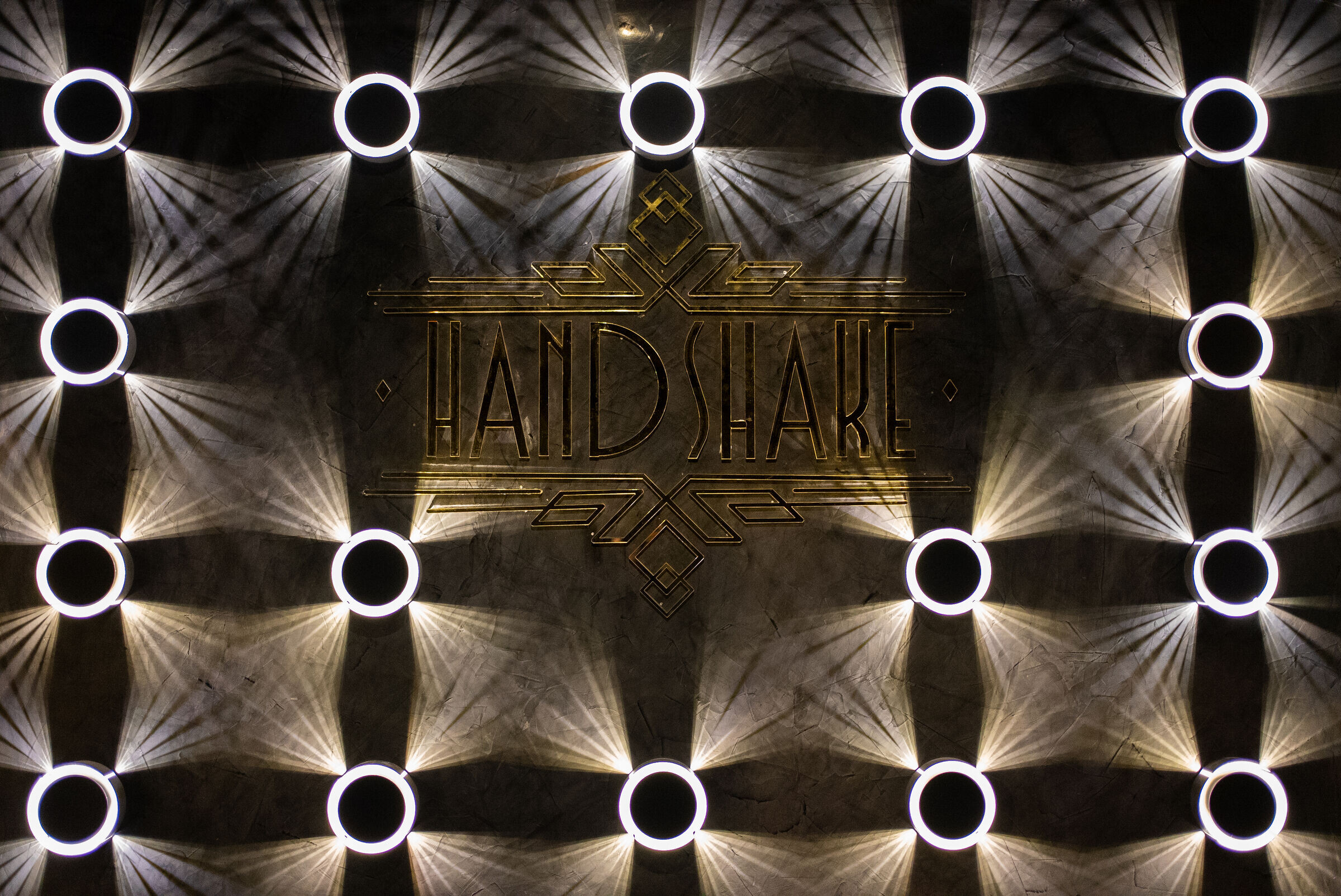As the era of Prohibition came to an end in 1933, speakeasies slowly faded away, but the concept of a hidden, secret bar has been revived in recent years. The speakeasy experience has become a popular trend in the hospitality industry, offering a unique and immersive experience for customers seeking a different experience from the world of mixology. The design of Handshake Bar seeks to recreate the glamour and allure of the Prohibition era.

Handshake Bar exudes the ambiance of a classic speakeasy. From the secret entrance of Handshake Bar, one is greeted with an alleyway that resembles the old alleyways of New York, seeking to transport the user back to those years of the Prohibition era. The entrance door is disguised as an apparent concrete wall. Upon entering the vestibule, one is met with a warmly lit room that provides an initial introduction to the colors that dominate in this proposal, abundant with dark wood accompanied by antique moldings and shelves where bottles and books share shelves. After passing through the vestibule, one enters the lounge where the main element of this space is a black marble bar. This bar is where all the essential components of the bar come to life, where drinks are crafted by the hands of bartenders. This marble bar features two "jockeys" (working spaces used by bartenders) where all the magic of mixology happens.

A custom stainless steel workspace was designed where the bartender has all the utensils they need to prepare a drink. The back bar is decorated with bottle racks with gold details. Here, the bottles and glassware are bathed in warm light. This light brings prominence to the main elements that make up a drink: liquor and glassware.

Due to the small size of the lounge, efforts were made to create the impression that the space is much larger than it seems. This was achieved by placing opposing mirrors to create a sense of depth. The warm lights of the lounge are reproduced to infinity, making the user believe that the space is larger. Behind the bar, there are several adjacent rooms that serve as a refrigeration chamber, where the establishment's ingredients and drinks are stored. This location is ideal because, being located behind the bar, it facilitated the installation of a tap service for carbonated beverages.




This allowed users to have a closer experience to the process of making a drink.





































